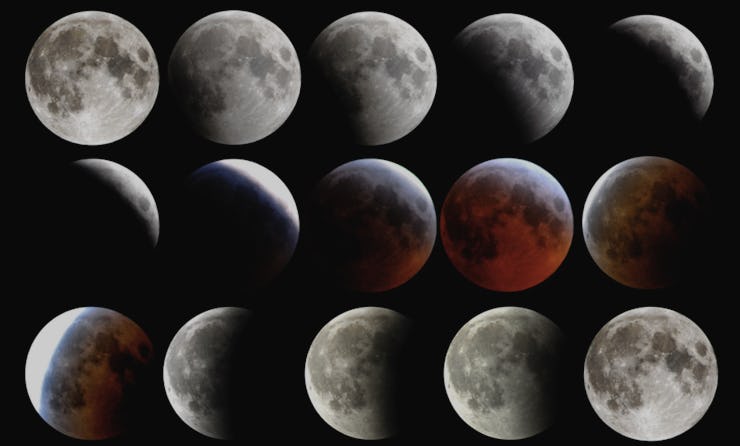Tonight's Full Moon Starts the Countdown to the Total Solar Eclipse
We're getting closer to August 21.

The full moon on August 7 is associated with a couple of cool things, namely, it begins the denouement of this moon that will result in the new moon that coincides with the total solar eclipse on August 21.
This moon has been called the “Sturgeon Moon” by First Nations tribes in reference to the species of large fish that’s easy to catch in the Great Lakes and Lake Champlain around this time of year. It’s also known as the “Grain Moon,” “Green Corn Moon” and the “Blueberry Moon.”
This full moon will actually get some special treatment, showcasing a shallow, partial lunar eclipse in the Eastern Hemisphere. For those in the Americas, however, this means there won’t be any kind of visual, as the lunar eclipse will occur while the sun is still in the sky and the moon is below the horizon.
As such, North Americans won’t be treated a true look at the moon at its exact fullest, but there will be an almost-full waxing gibbous moon on the nights of August 6 and 7, followed by an almost-full waning gibbous moon towards the end of the August 7 evening and into August 8.
This moon is also a big deal because it sets us up to welcome the historic total solar eclipse on August 21. An eclipse only occurs when the new moon cruises between the sun and the Earth, and a total solar eclipse is a much rarer event.
A total solar eclipse – when the moon completely covers the sun – is infrequent due to what scientists call the moon’s “wobble.” As the moon makes a complete lap around Earth, its wobbling transit often brings it too high, so the moon’s shadow “overshoots” the Earth. Alternately, the opposite happens, when its orbit is too low.
Needless to say, the upcoming solar eclipse in super rare. In the 5,000 year period between 2000 BCE and 3000 CE, only 635 total solar eclipses will have occurred, coming to about two total solar eclipses every three years. The event is also only visible across a narrow, 68-mile path on Earth, where the moon’s shadow is cast on Earth’s surface. For the first time since 1979, its path is going to traverse the entire continental United States, beginning in Oregon and ending in South Carolina.
Must Read: 3 Hard-Science Experiments Happening During the 2017 Solar Eclipse
With reporting from Mark Kaufman.